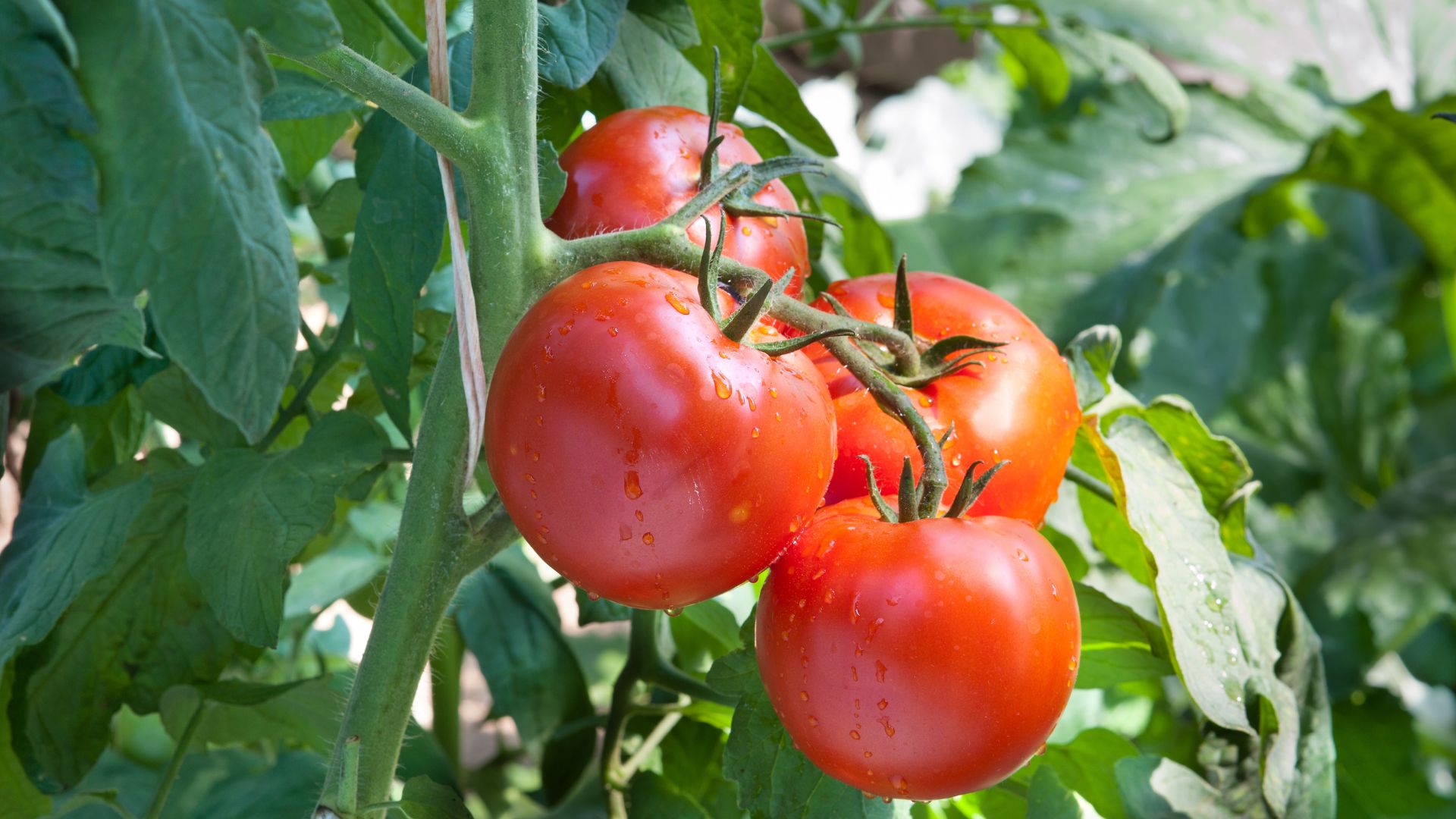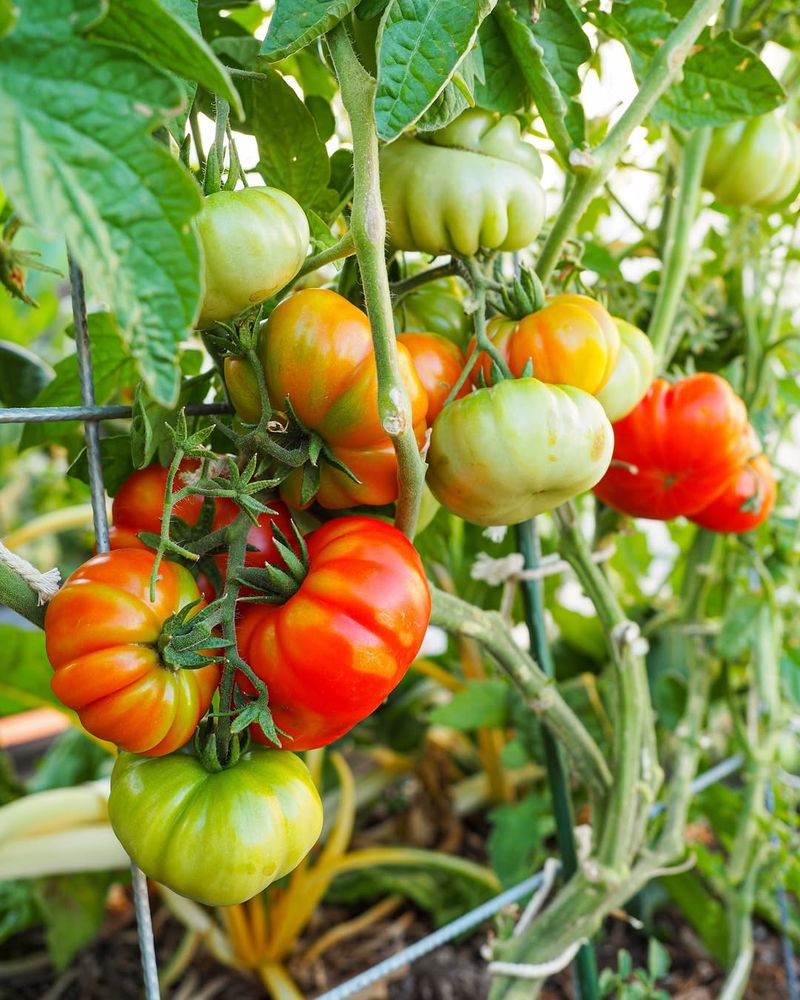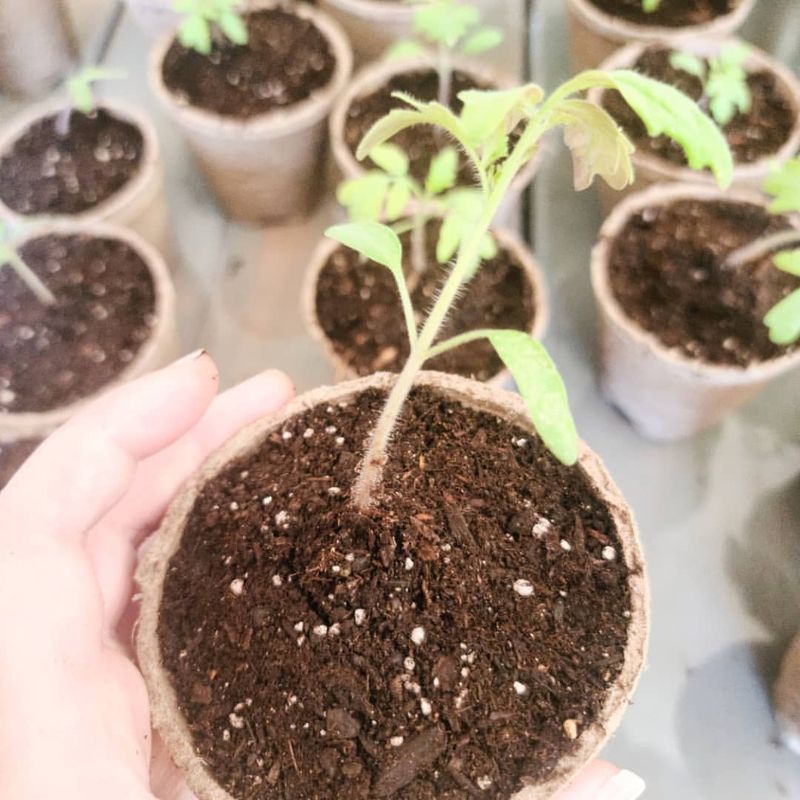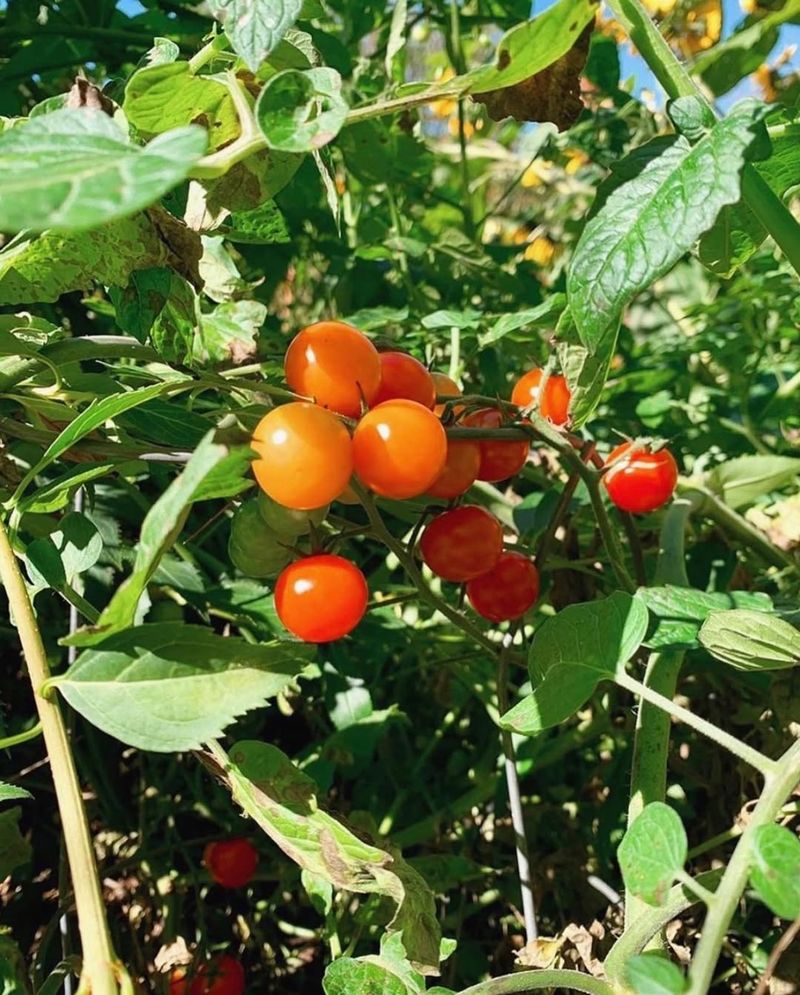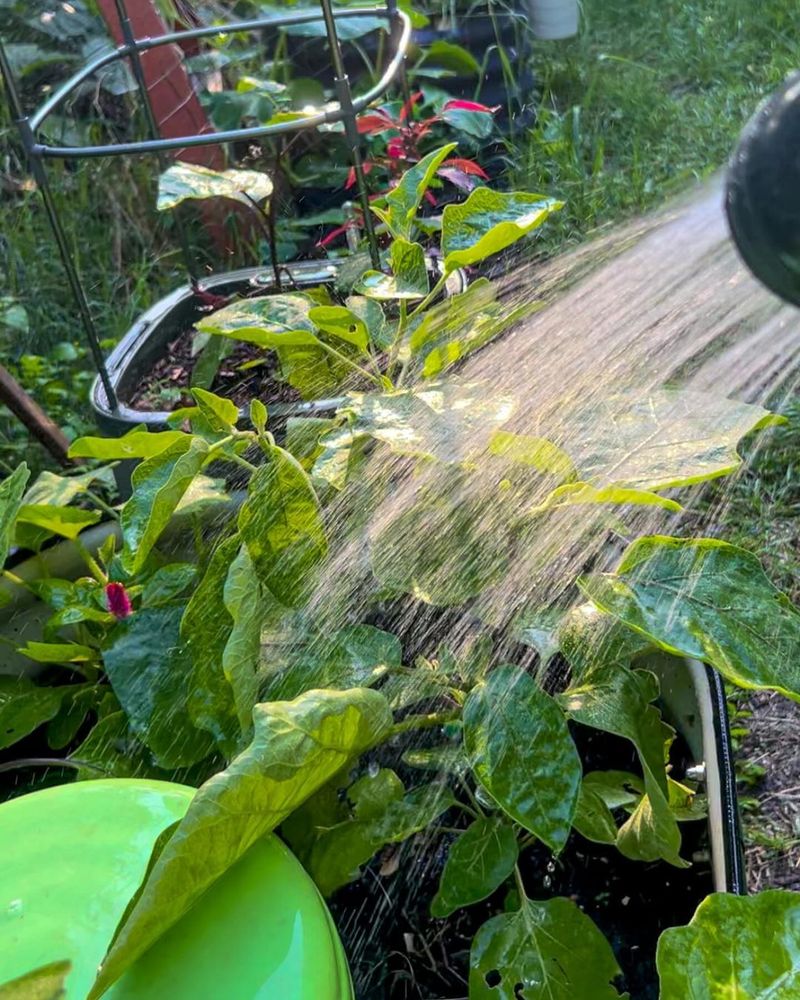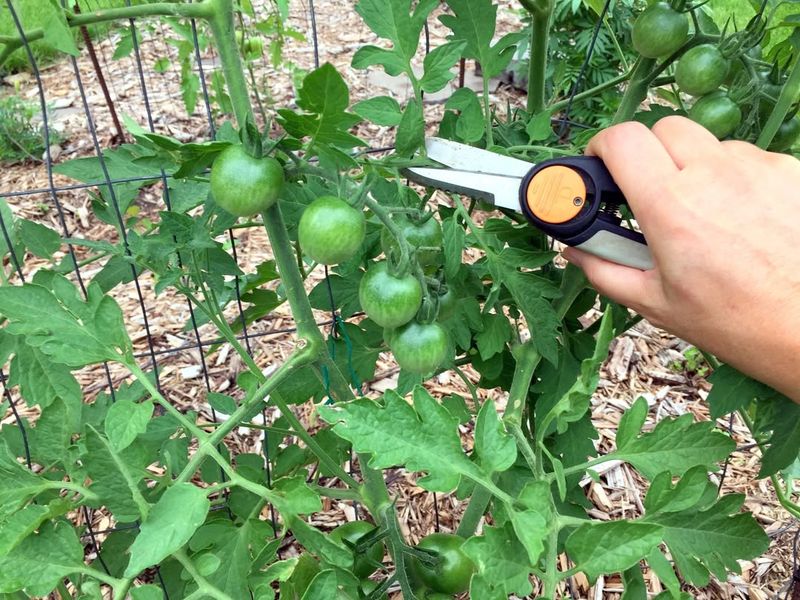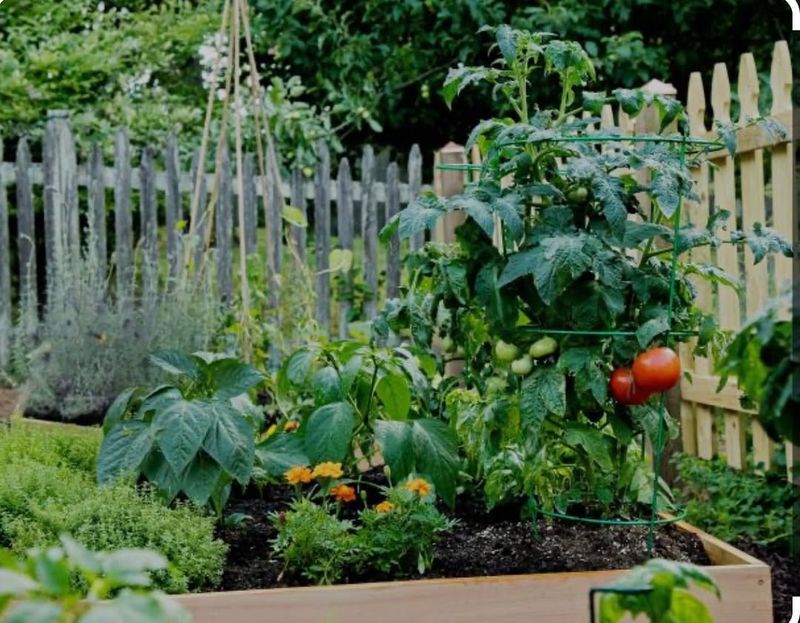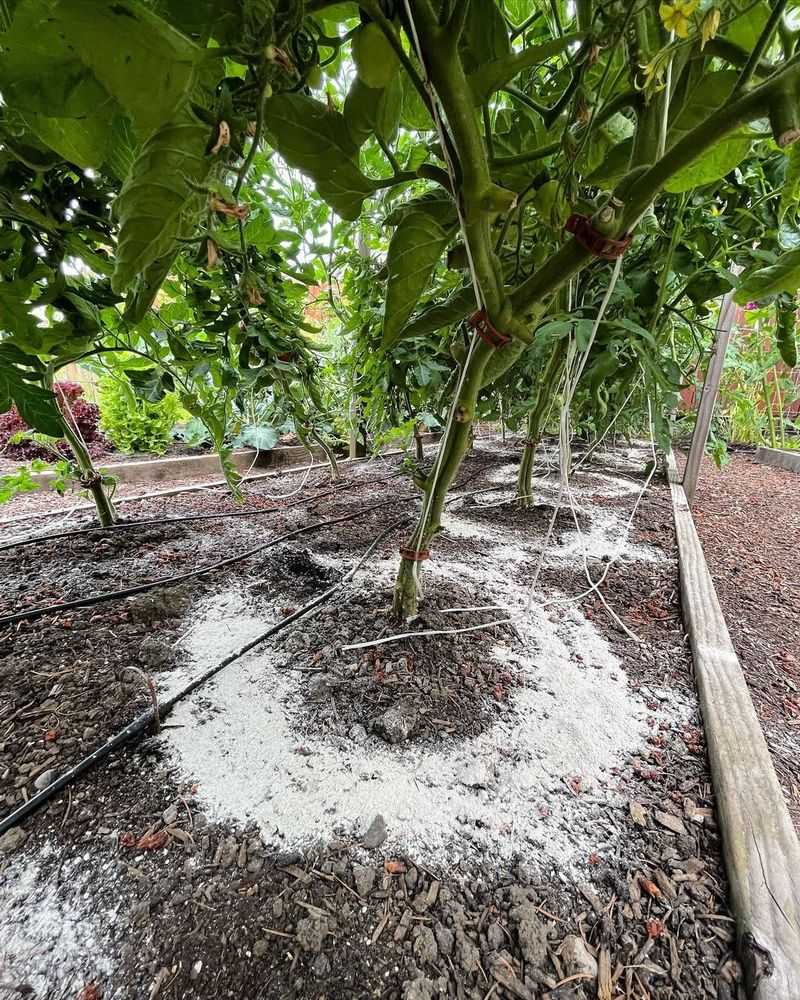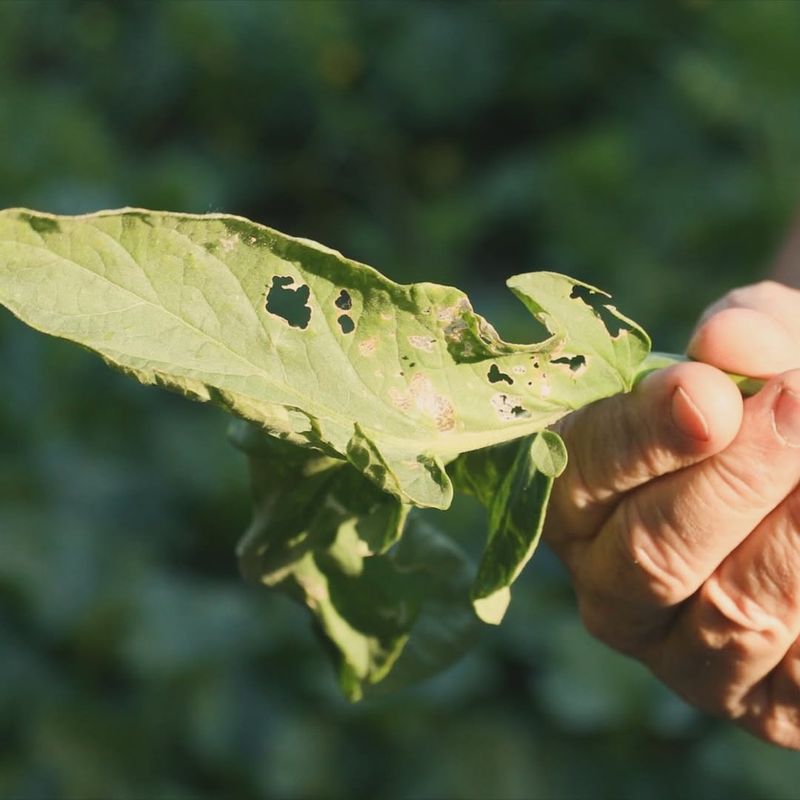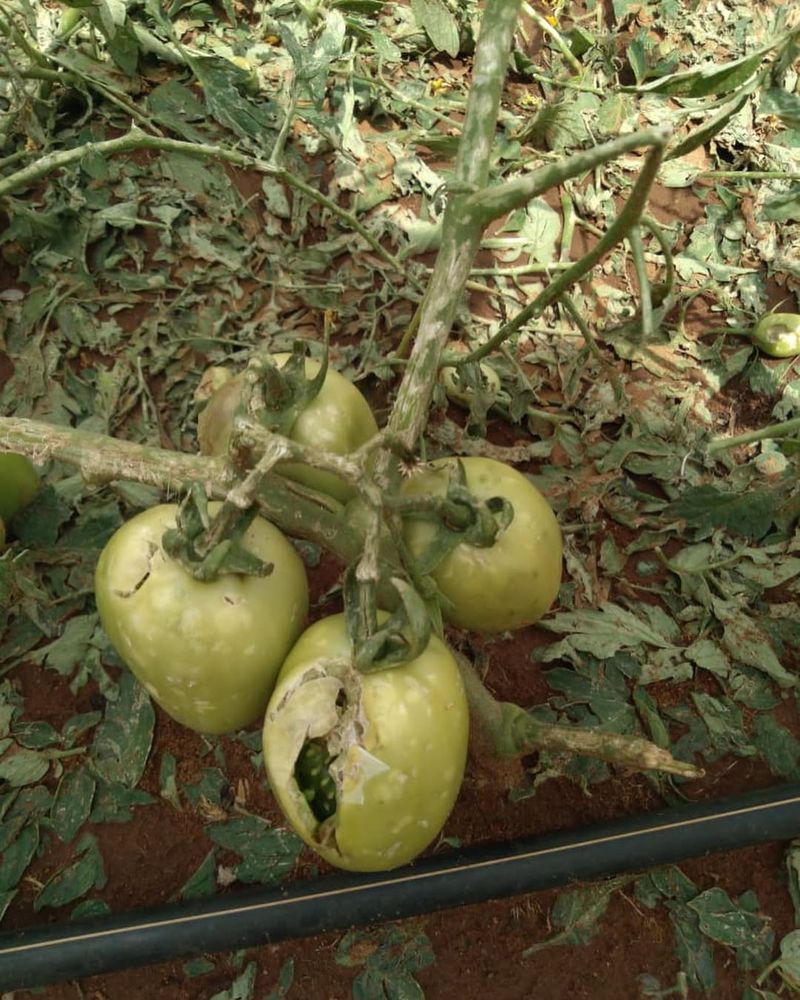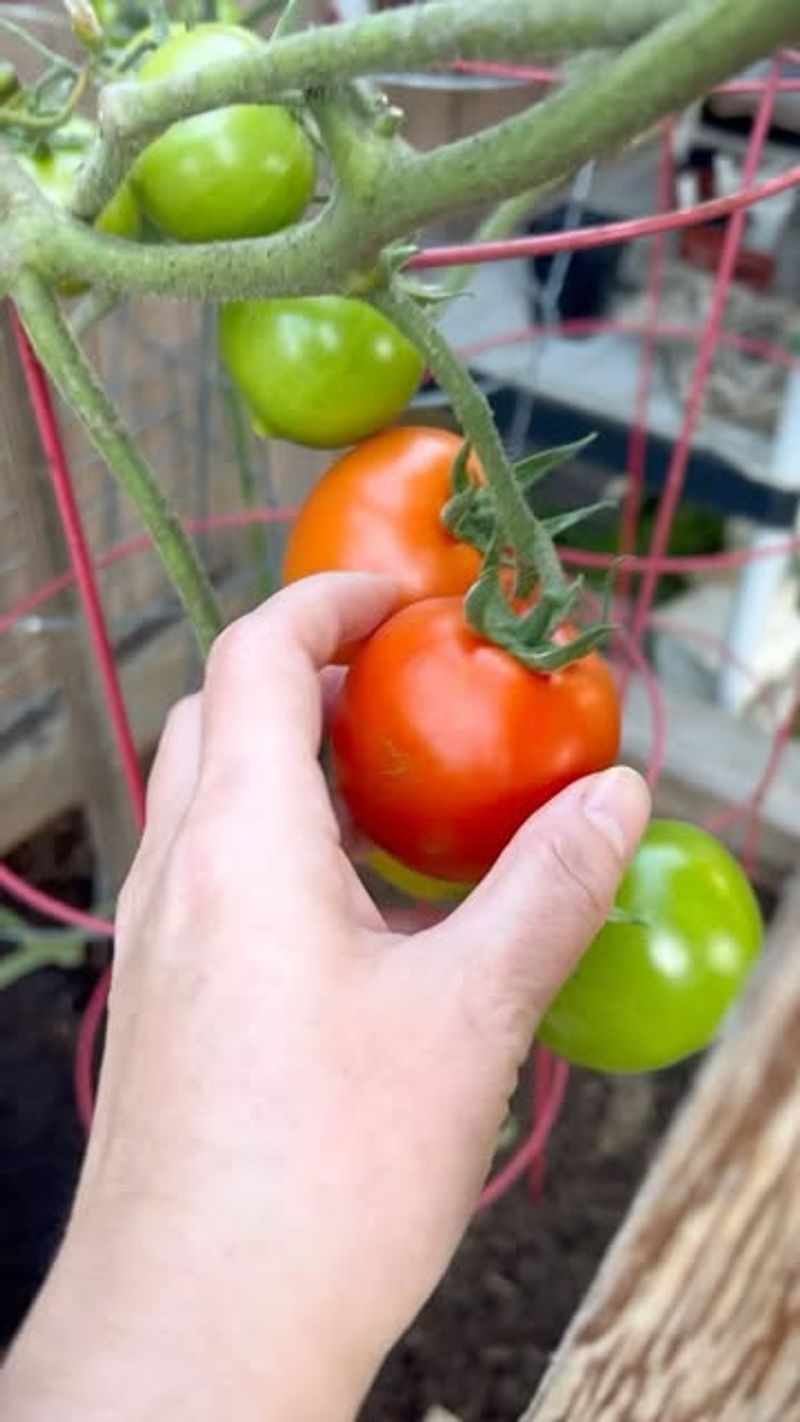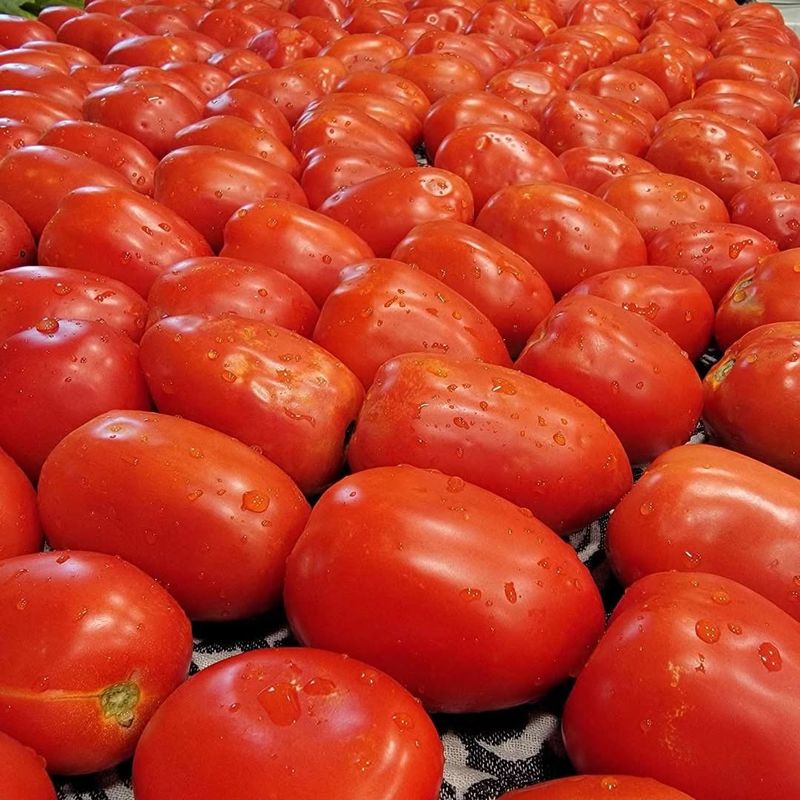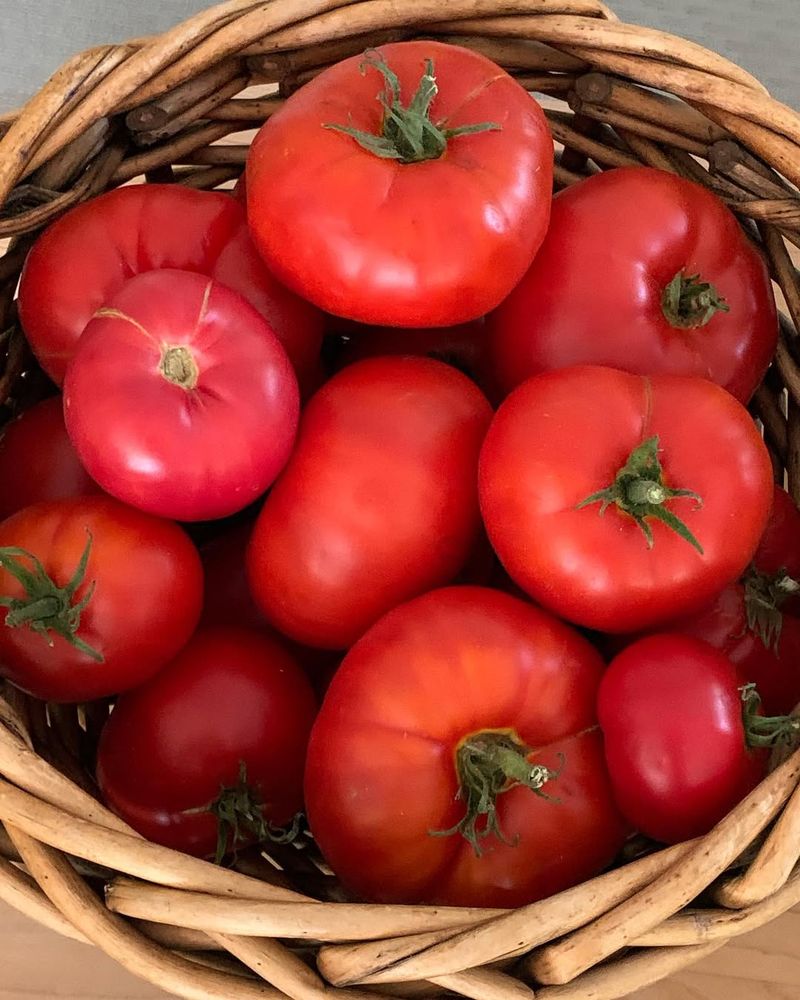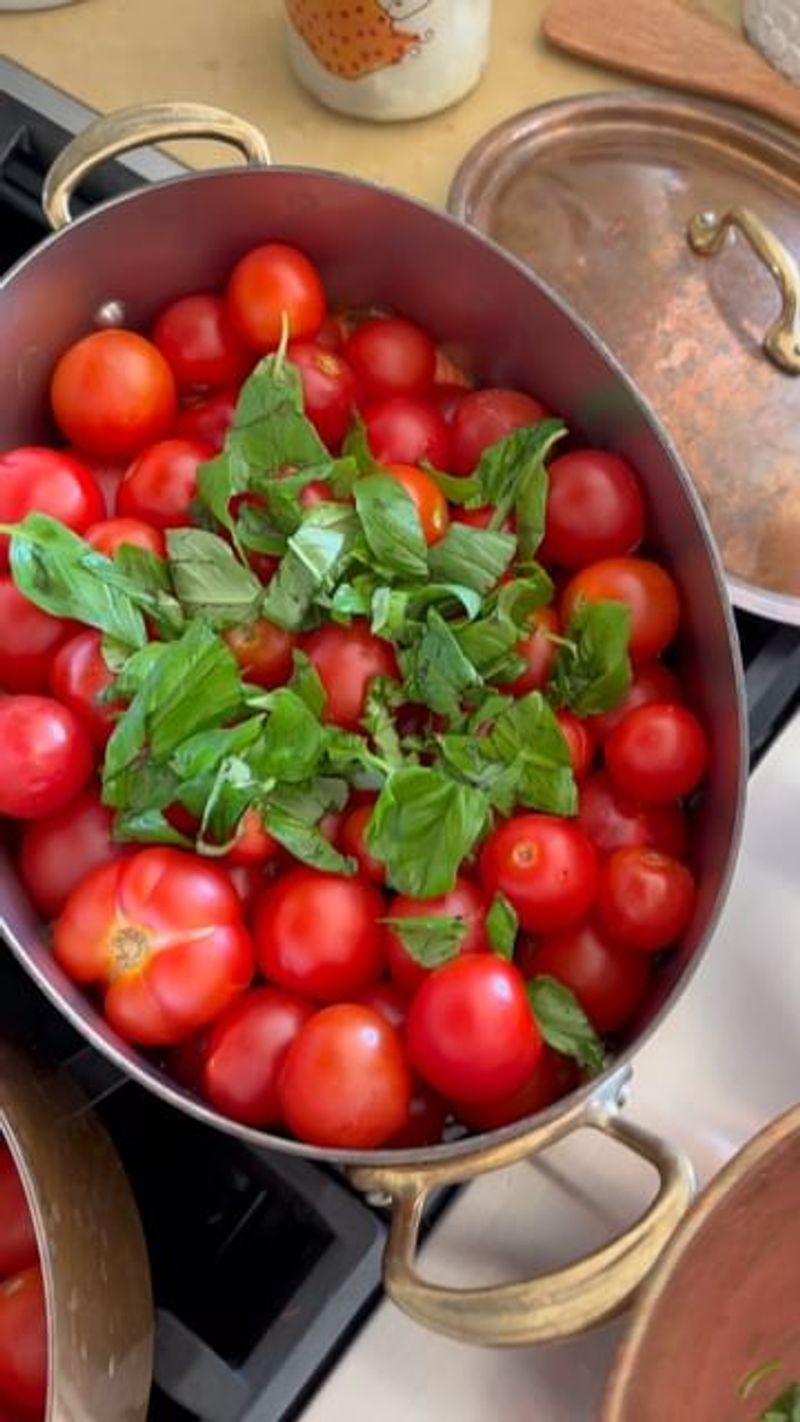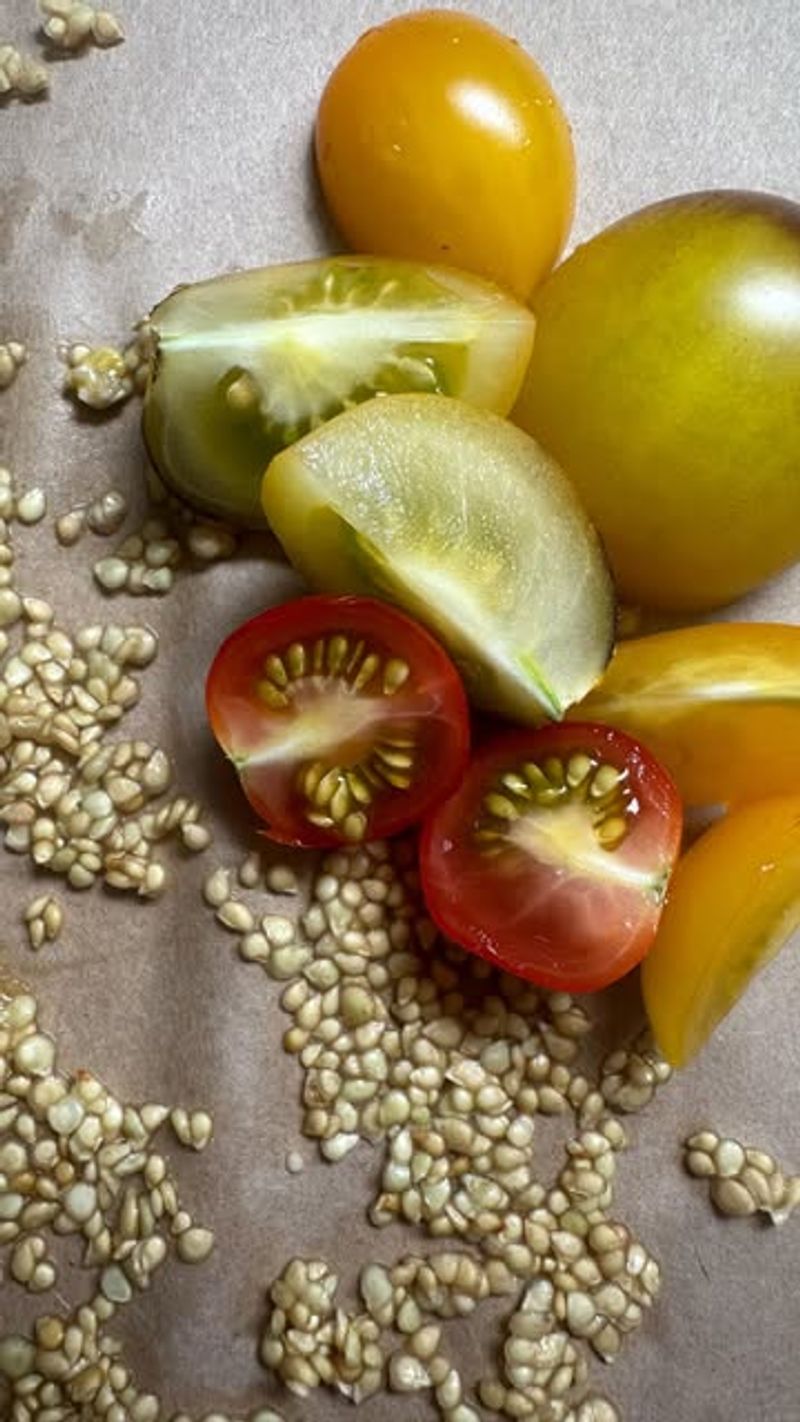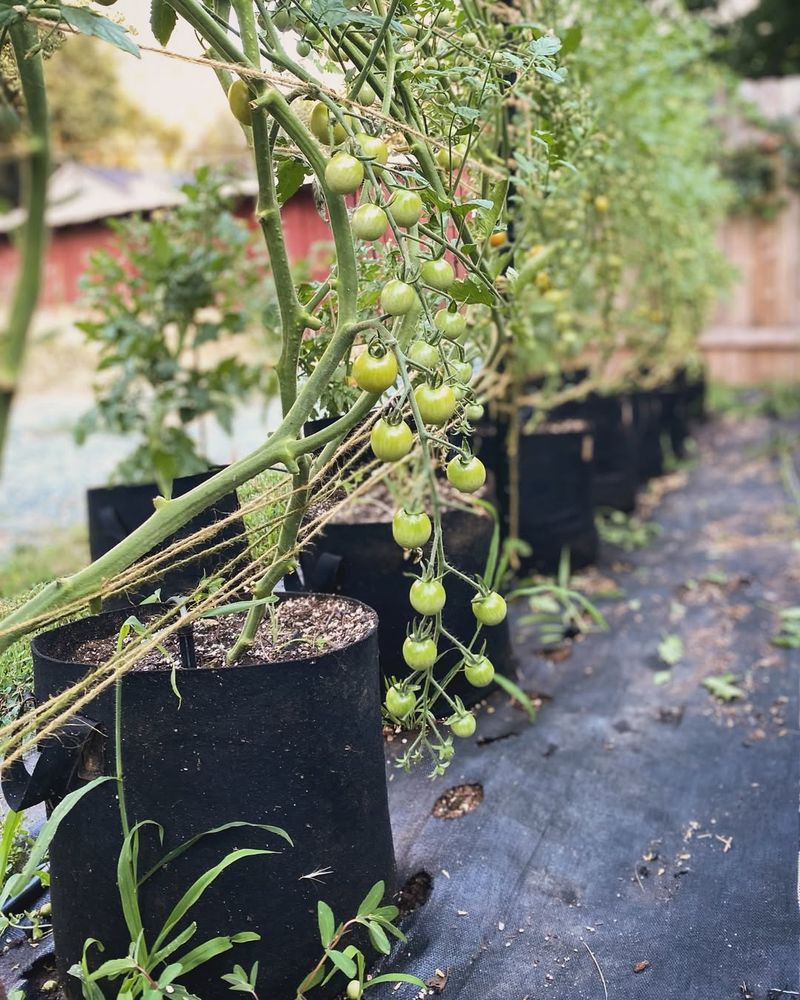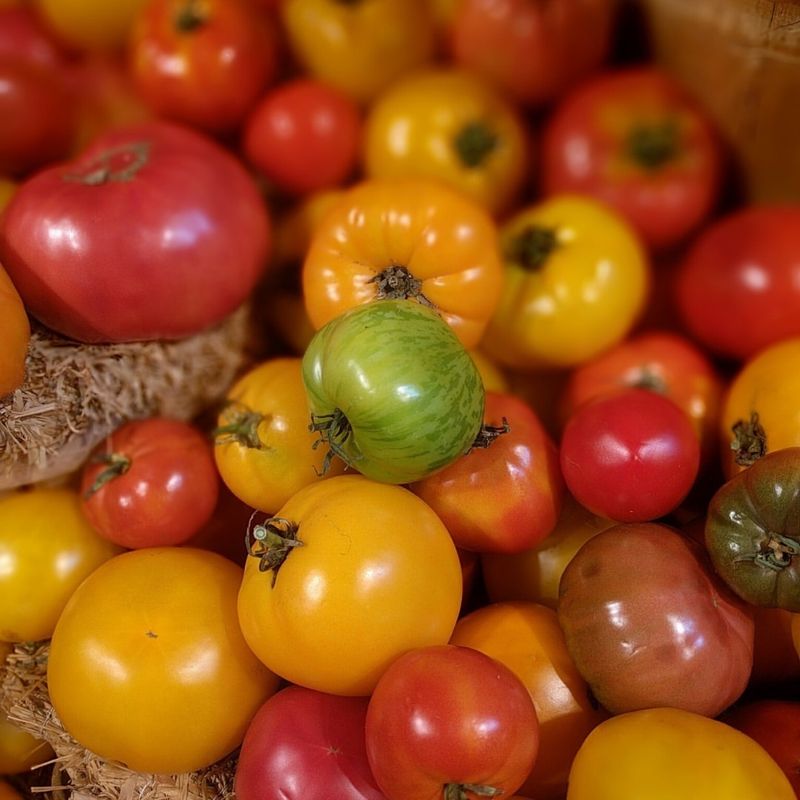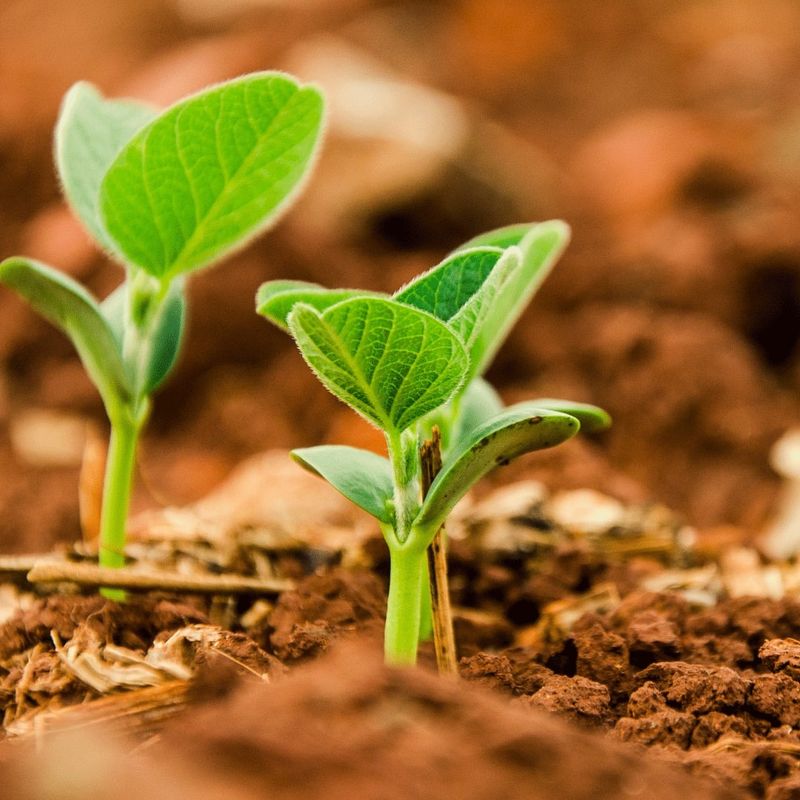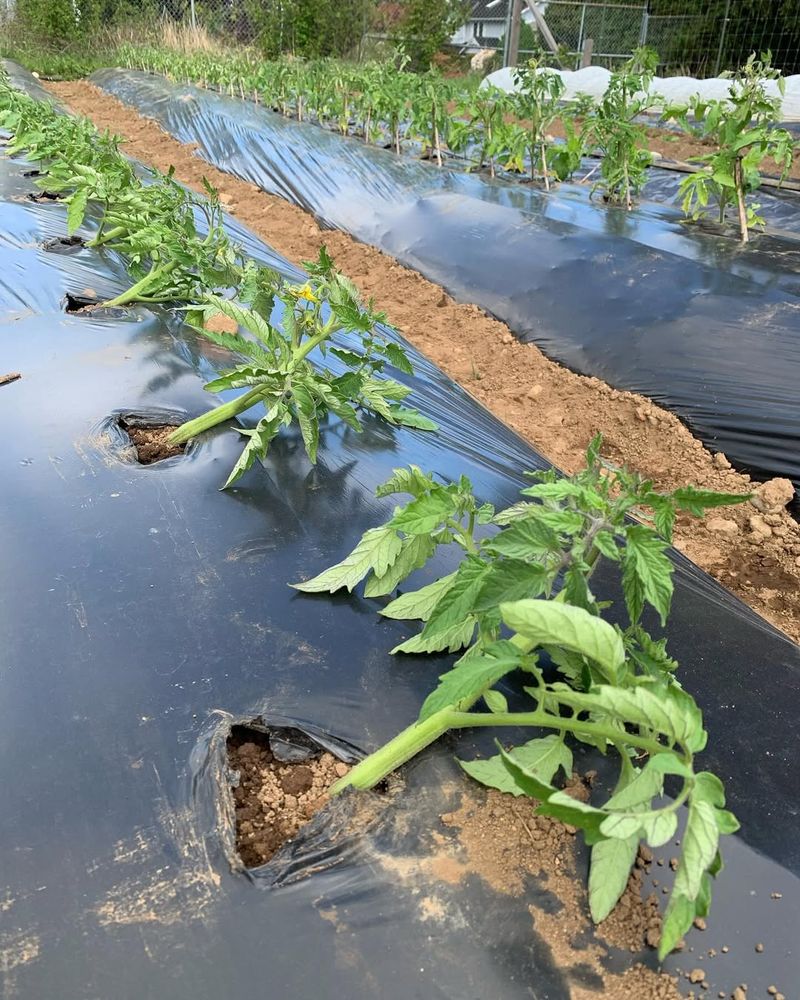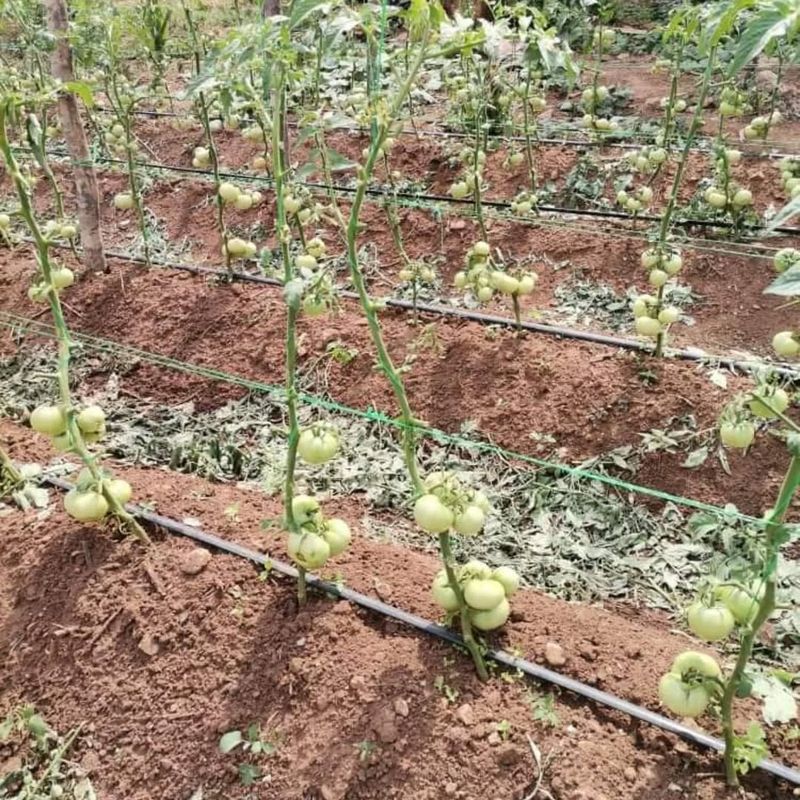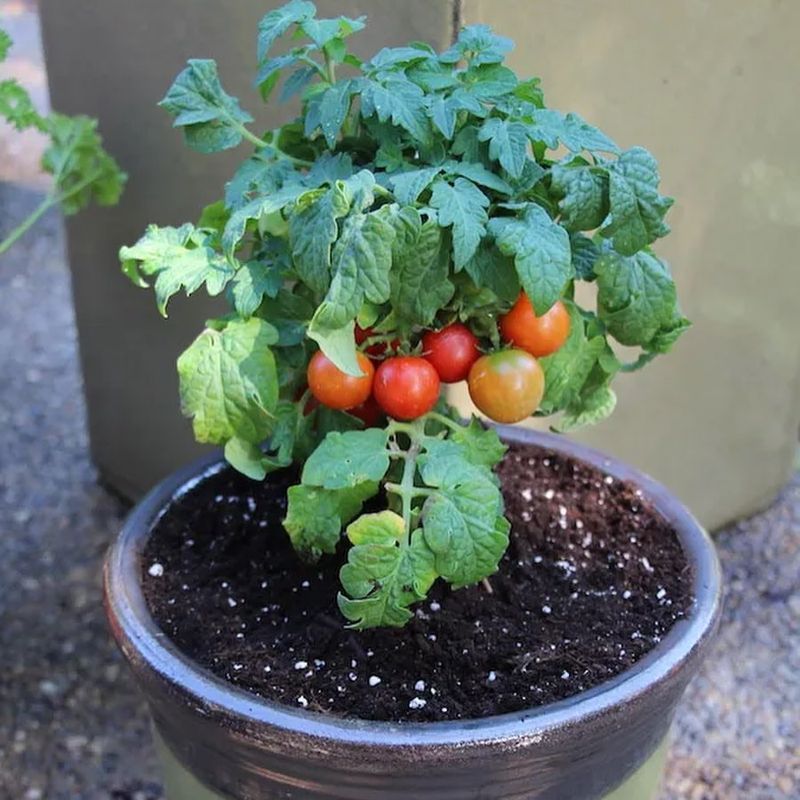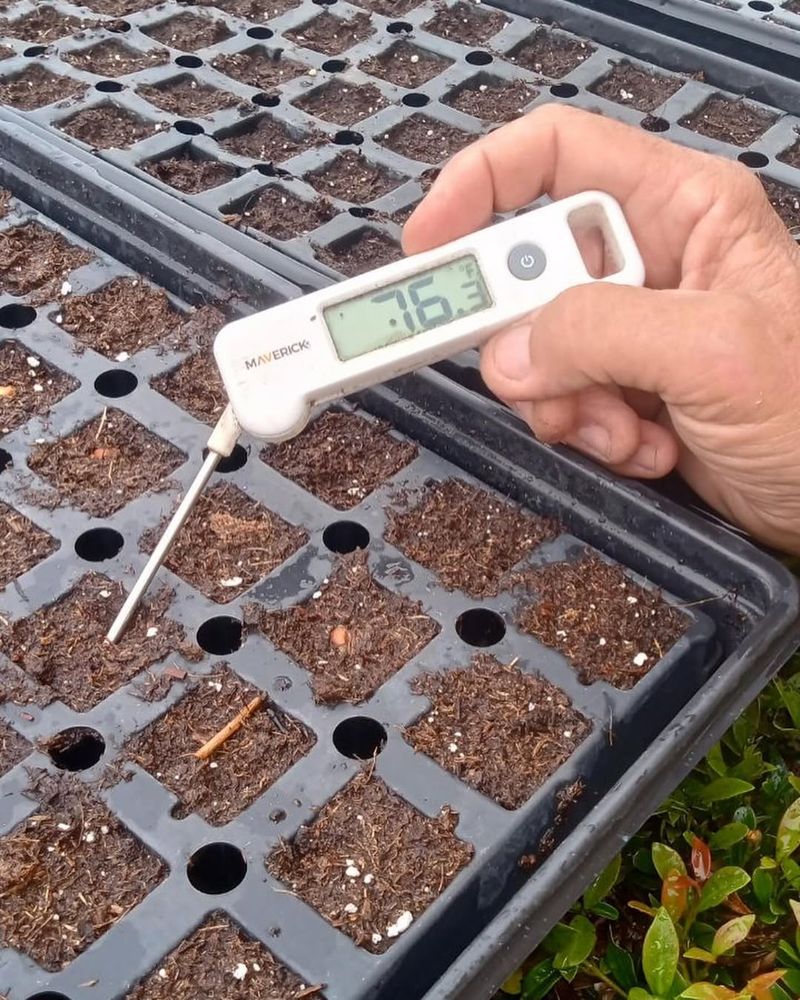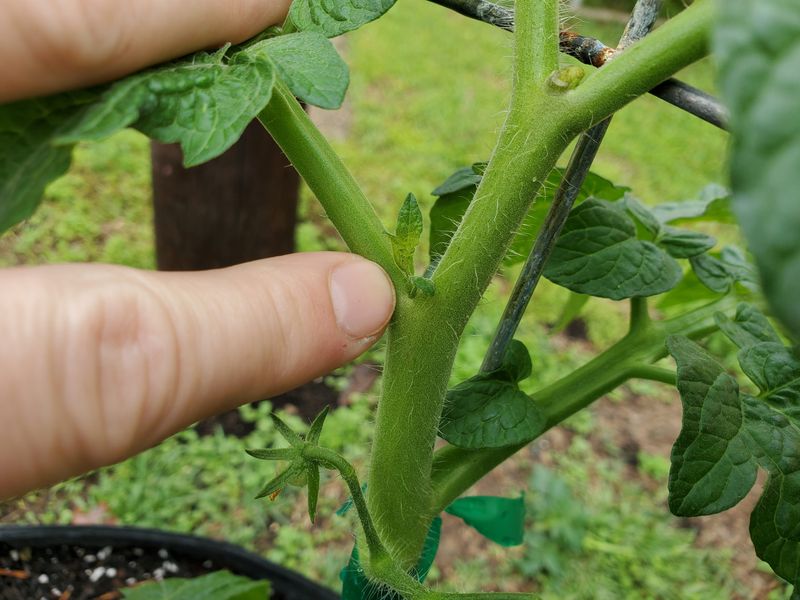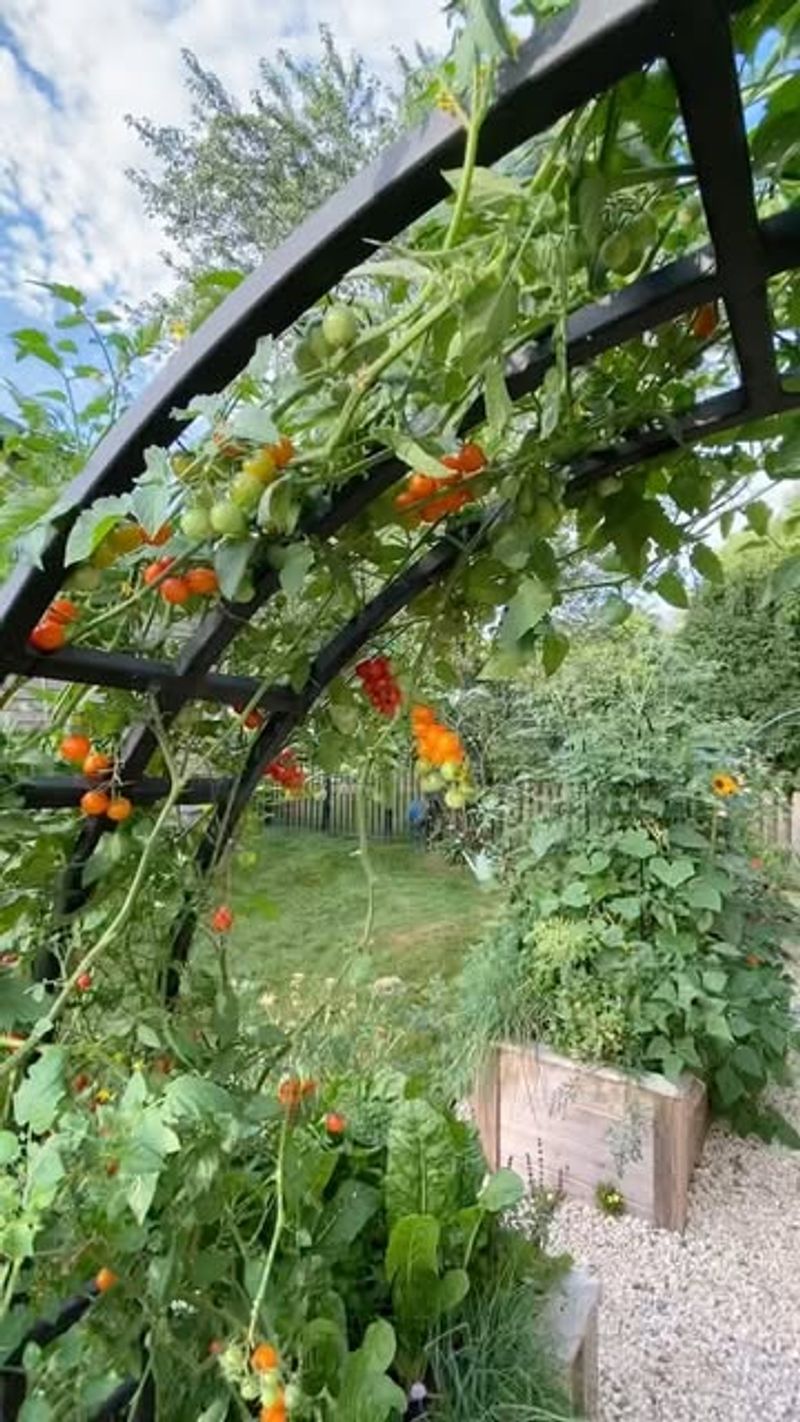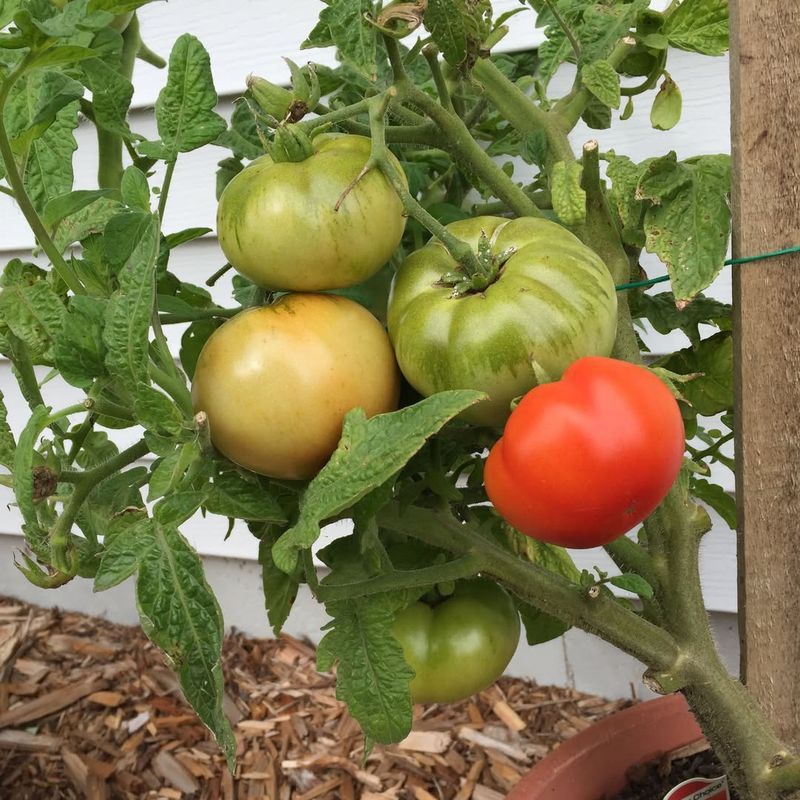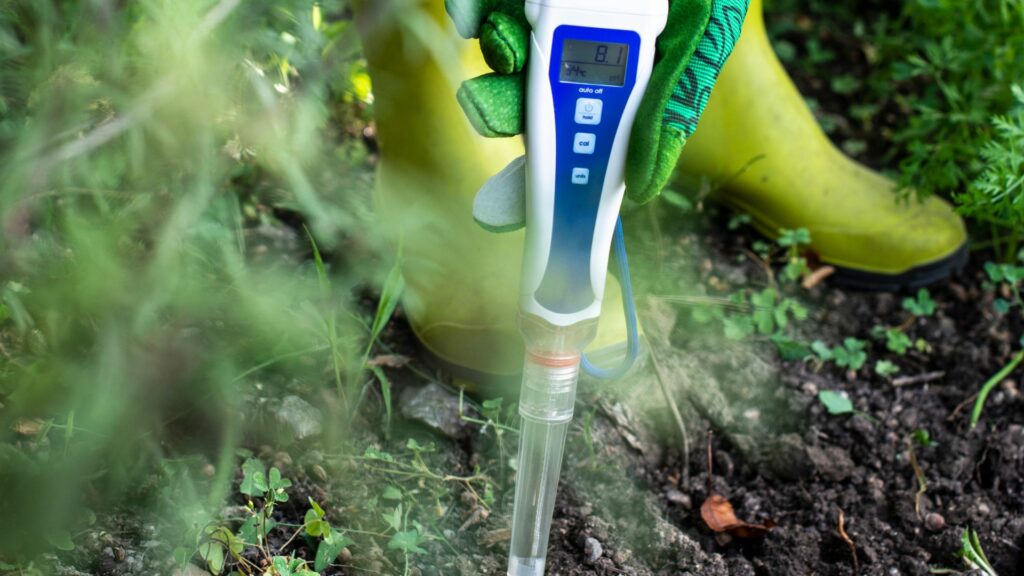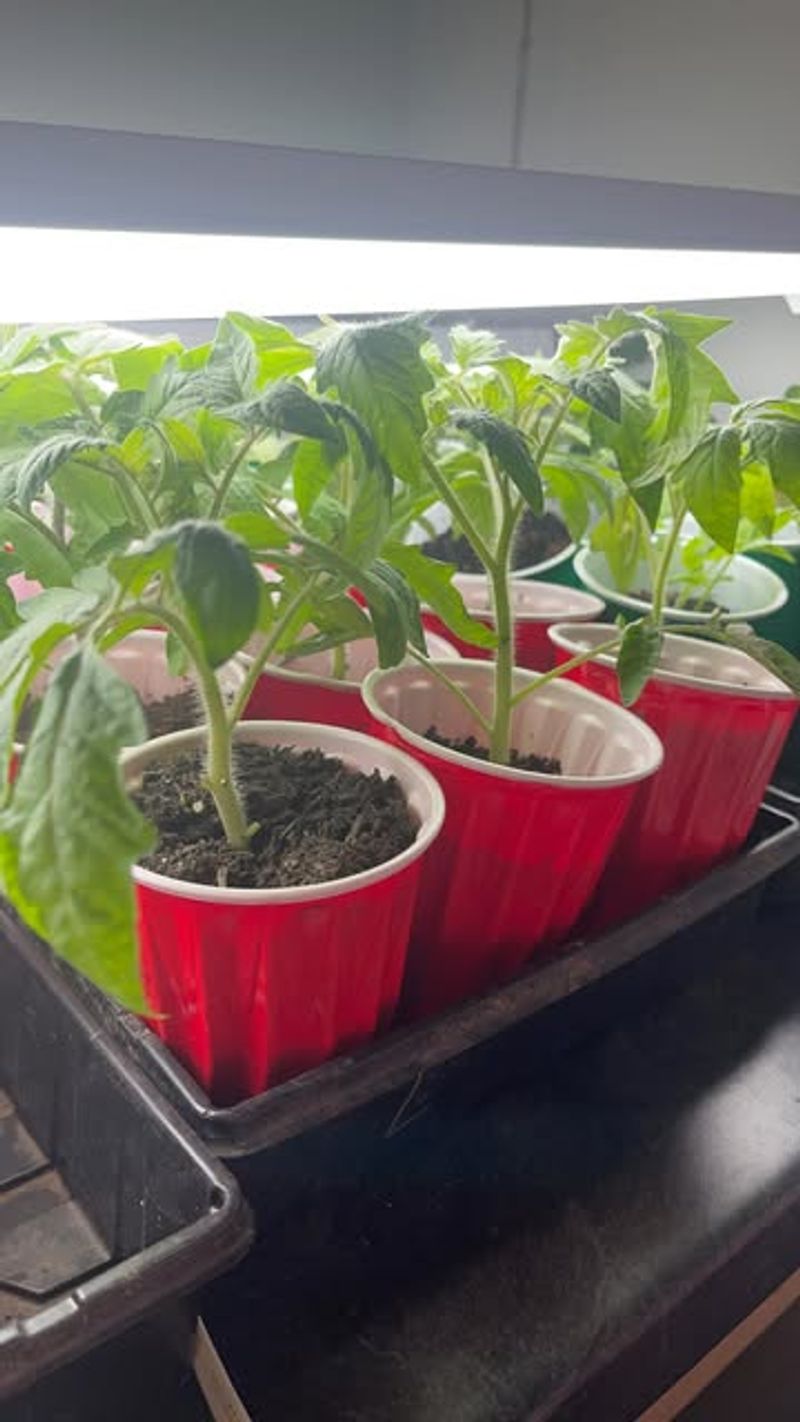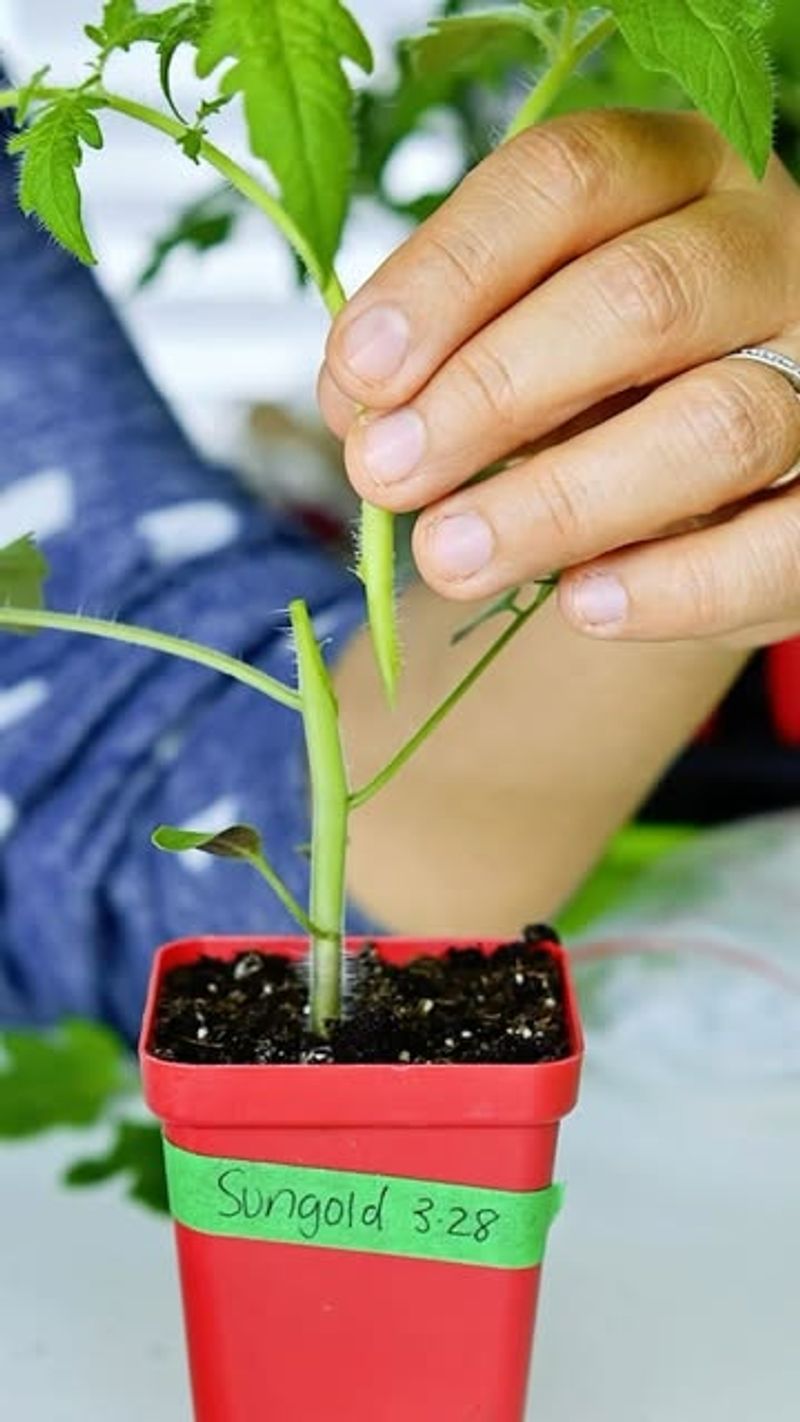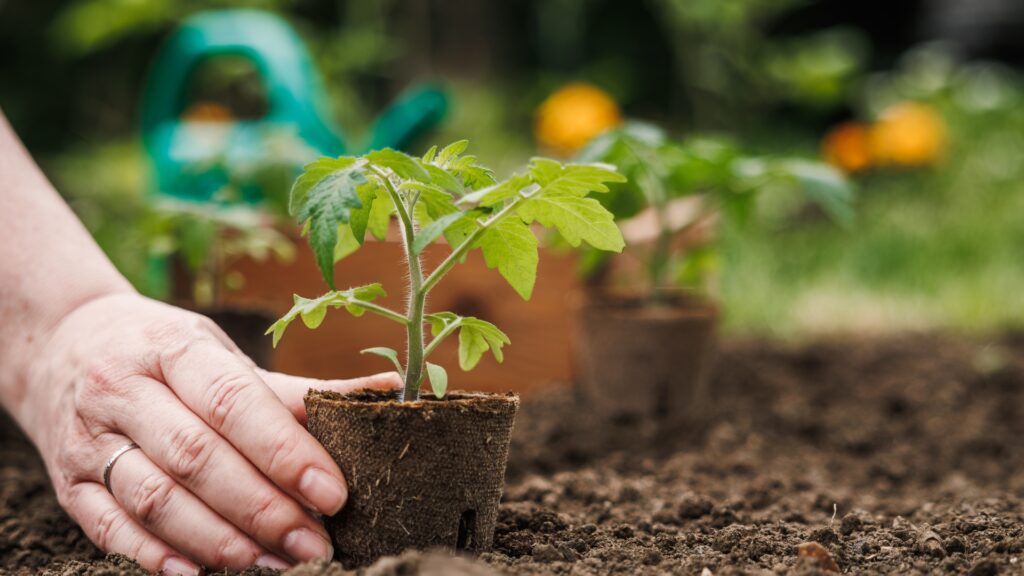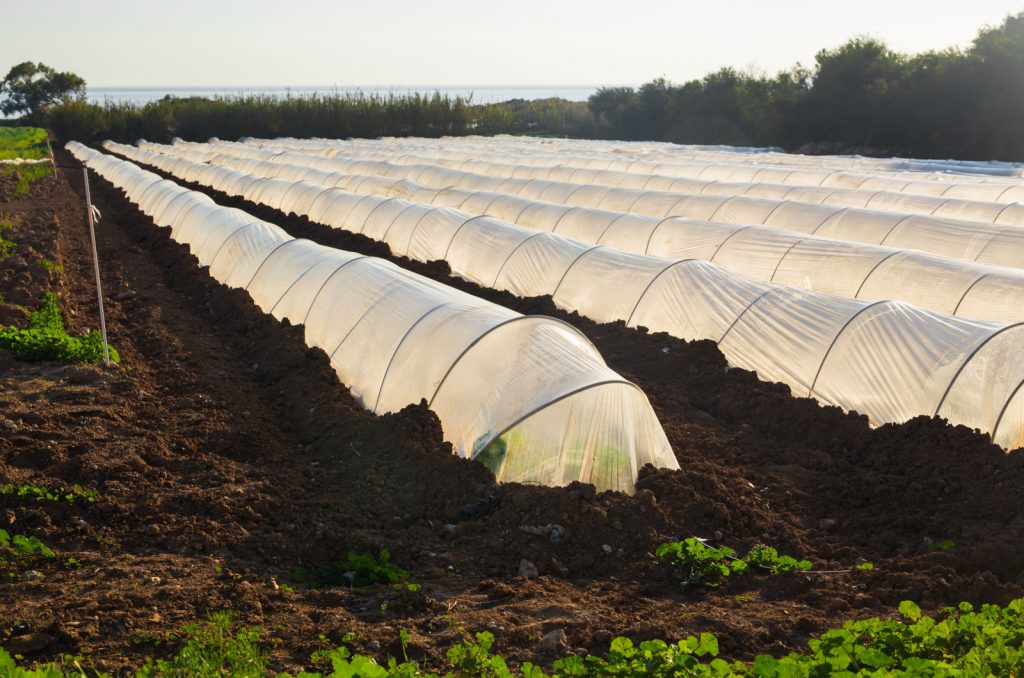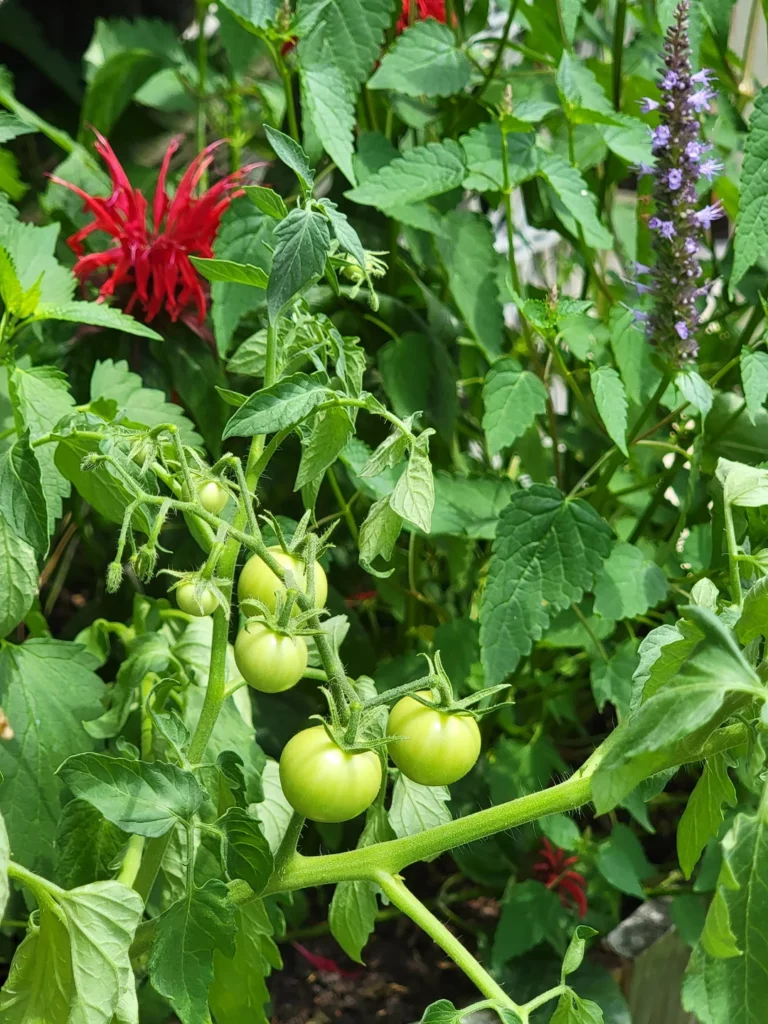Tomatoes that burst with flavor and sweetness? Yes, please! If you’re ready to grow the juiciest, most delicious tomatoes, I’ve got you covered with 31 essential tips.
From choosing the right variety to mastering the perfect soil, these facts will take your tomato-growing game to the next level.
Plus, I’ll share a few tricks that will have your tomatoes tasting like they just came from the farm stand. Let’s dig in and start growing those mouth-watering tomatoes you’ve been dreaming of!
1. Choosing The Right Variety
Selecting the right variety of tomato plants is fundamental to success. Heirloom varieties often offer a more robust flavor compared to hybrid types. Consider your climate and soil type when making a selection.
It’s essential to match the variety with your growing conditions to achieve the best taste. Experiment with different types to discover which ones thrive in your garden. Planting an assortment allows you to enjoy a range of flavors, from sweet to tangy. Remember, the journey to a delicious tomato starts with the right seed.
2. Optimal Soil Preparation
Preparing the soil properly is a cornerstone for growing tasty tomatoes. Start by testing the pH level, aiming for a slightly acidic balance between 6.0 and 6.8. Enrich the soil with organic matter like compost or well-rotted manure to boost nutrients.
A well-aerated soil ensures roots have the space to grow strong. Consistent efforts in soil preparation can significantly influence the quality of your tomatoes. Regularly check and adjust the soil conditions, as this will maintain a fertile environment. Good soil preparation is an ongoing process, not just a one-time task.
3. Sunlight Requirements
Tomatoes thrive in sunlight and require at least 6 to 8 hours of direct sun daily. Proper sunlight exposure ensures your tomatoes develop their full flavor potential. Lack of sufficient light can lead to weak growth and bland fruit.
Position your tomato plants in the sunniest part of your garden for optimal results. If space is limited, consider using reflective surfaces to increase light exposure. Monitoring sunlight levels is crucial for achieving flavorful tomatoes. Adjust plant placement as needed to maximize sun exposure throughout the growing season.
4. Watering Techniques
Watering is both art and science, balancing enough moisture without over-saturating. Consistent watering is key, ideally in the morning to reduce evaporation. Aim to provide about 1 to 1.5 inches of water per week, either from rainfall or manual watering.
Avoid wetting the foliage to minimize the risk of disease, focusing on the base of the plant instead. Mulching around the base helps retain moisture and reduce water loss. Regular checks help ensure your plants are neither too dry nor too wet. Proper watering is vital for tasty tomatoes.
5. Pruning For Healthier Plants
Pruning helps direct a plant’s energy towards producing flavorful fruit, rather than excess foliage. Remove any yellowing leaves or stems that are crowding the plant. Focus on the lower leaves, which are more prone to disease.
Regular pruning encourages better air circulation, reducing the risk of fungal infections. Pruning also allows sunlight to penetrate deeper into the plant, aiding in fruit development. Be gentle and precise with your cuts to prevent damage. A well-pruned tomato plant will reward you with an abundance of delicious fruit.
6. Companion Planting
Companion planting can boost tomato health and flavor. Planting basil nearby can improve growth and subtly enhance the taste. Other beneficial companions include marigolds, which deter pests, and carrots, which help improve soil.
Avoid planting tomatoes near members of the cabbage family, as they can stunt growth. Strategically placing companion plants can lead to a more vibrant garden and tastier tomatoes. Experiment with different combinations to see what works best in your space. A harmonious garden environment fosters better-tasting tomatoes.
7. Fertilizing For Flavor
Proper fertilization is crucial for flavorful tomatoes. Use a balanced organic fertilizer to provide essential nutrients. Applying fertilizer at the right time, like when tomatoes begin fruiting, can enhance flavor development. Over-fertilization, however, can lead to excessive foliage and bland fruit. Monitor your plants and soil to adjust nutrient levels as needed.
Regularly supplement with compost to maintain soil fertility. Organic options often offer better results than synthetic ones. By feeding your plants thoughtfully, you’ll enjoy tomatoes that are both healthy and delicious.
8. Pest Management
Keeping pests under control is vital for healthy tomato growth. Regularly inspect plants for signs of aphids, hornworms, or other common pests. Introducing beneficial insects like ladybugs can help manage harmful populations naturally.
Use organic pesticides as a last resort, focusing on targeted treatments. Maintaining a clean garden environment reduces pest risks. Rotate crops annually to prevent pest buildup in the soil. Effective pest management leads to healthier plants and tastier fruit. Vigilance and proactive measures ensure your tomatoes remain pest-free and delicious.
9. Diseases To Watch Out For
Awareness of common tomato diseases can save your crop. Early signs of blight, wilts, or molds must be addressed promptly. Choose disease-resistant varieties to minimize risks. Implement crop rotation and proper spacing to enhance air circulation.
Remove affected leaves immediately to prevent spread. Organic fungicides can serve as preventive measures. Keeping your plants healthy through regular inspections and maintenance reduces disease risks. A proactive approach ensures your tomatoes reach their full flavor potential without being compromised by disease.
10. Harvesting At Peak Ripeness
Picking tomatoes at the right time is critical for flavor. Wait until they are fully ripened on the vine, turning a deep red color. Gently twist and pull to avoid damaging the plant. Overripe tomatoes can be mushy, while underripe ones lack flavor. Regularly check your plants to harvest at the perfect moment.
Use trial and error to develop a sense for timing. By picking tomatoes at their peak, you guarantee the best taste and texture. Freshly harvested tomatoes offer a rewarding conclusion to your gardening efforts.
11. Storing Tomatoes Correctly
Proper storage maintains tomato taste and texture. Avoid refrigeration, which can dull flavors. Instead, store at room temperature until fully ripe. Once ripened, consume quickly for the best taste. If storage is necessary, keep them in a single layer to prevent bruising.
Consider canning or drying as preservation methods for surplus harvests. Always handle tomatoes gently to avoid damage. Correct storage extends the life of your tomatoes and ensures consistent flavor. Thoughtful storage keeps your delicious tomatoes ready for salads and sauces.
12. Utilizing Fresh Tomatoes
Fresh tomatoes are versatile in the kitchen, enhancing salads, salsas, and sandwiches. Combine different varieties for a unique taste experience. Tomatoes pair well with olive oil, balsamic vinegar, and fresh herbs like basil.
Experimenting with raw and cooked preparations expands your culinary possibilities. Grilled, roasted, or chopped fresh, they bring a burst of flavor to dishes. Fresh tomatoes highlight the success of your gardening efforts. Enjoying them in various recipes underscores their deliciousness and your gardening skills.
13. Cooking With Tomatoes
Cooking tomatoes unlocks deeper flavors, perfect for sauces and soups. Slow cooking enhances their natural sweetness. Pair with strong herbs and spices to complement their taste. Simmering with garlic and onions creates a flavorful base.
Roasting intensifies their richness, while blending yields a smooth texture. Cooking offers an opportunity to enjoy your tomatoes in diverse ways. Whether in traditional recipes or inventive dishes, tomatoes shine in cooked forms. Their versatility ensures they remain a staple ingredient in many cuisines.
14. Saving Tomato Seeds
Saving seeds from your best tomatoes preserves their qualities for future planting. Choose fully ripened, healthy fruits for seed saving. Clean and dry the seeds thoroughly before storage. Label and store them in a cool, dark place until the next planting season.
This practice allows you to maintain preferred varieties year after year. Seed saving encourages sustainable gardening by reducing reliance on commercial seeds. Sharing seeds with fellow gardeners promotes diversity and community. By preserving seeds, you contribute to a long-lasting tomato legacy.
15. Using Tomato Feeders
Using tomato feeders can enhance growth and flavor. Liquid feeds or slow-release granules provide essential nutrients. Apply feeders during key growth stages for maximum benefit. Overfeeding can harm plants, so follow package instructions carefully.
Regular feeding helps maintain healthy growth and vibrant fruit. Opting for organic feeders supports sustainable gardening. Feeders complement natural soil fertility, leading to tastier tomatoes. Thoughtful use of feeders keeps your plants thriving and productive throughout the season.
16. Understanding Tomato Types
Familiarity with different tomato types enriches your gardening experience. Cherry tomatoes offer sweet bursts, while beefsteaks provide juicy slices. Each type has unique growing needs and flavor profiles. Choose types that align with your culinary goals.
Understanding distinctions helps in selecting suitable varieties for your garden. Experimenting with different types broadens your taste horizons. Whether for snacking, cooking, or salads, diverse tomato types cater to various preferences. Discover the joy of growing and enjoying multiple tomato varieties.
17. Implementing Crop Rotation
Crop rotation is an effective strategy for maintaining soil health. Rotating tomatoes with other plant families prevents nutrient depletion. It reduces soil-borne disease risks and pest buildup. Plan a rotation schedule, alternating plant groups annually.
This practice promotes a balanced garden ecosystem. It supports sustainable gardening by enhancing soil fertility and structure. Crop rotation contributes to the long-term success of tomato cultivation. By rotating crops, you ensure your tomatoes remain healthy and flavorful over the years.
18. Mulching For Moisture Control
Mulching is crucial for retaining soil moisture and suppressing weeds. Organic mulches like straw or shredded leaves provide additional nutrients. Apply a thick layer around the base, avoiding direct contact with stems. Mulch helps regulate soil temperature, protecting roots from extreme conditions.
It reduces evaporation, ensuring consistent moisture levels. Regularly renew mulch to maintain its effectiveness. Mulching supports healthy plant growth and enhances flavor. By incorporating mulch into your gardening routine, you promote vibrant and productive tomatoes.
19. Ensuring Good Air Circulation
Good air circulation prevents fungal diseases and supports healthy growth. Proper spacing between plants allows air to move freely. Prune crowded areas to enhance airflow. Trellising can elevate plants, reducing humidity around the base.
Regularly inspect for dense foliage and adjust accordingly. Ensuring adequate air circulation promotes robust plant health. It minimizes risk factors that impact flavor and yield. By prioritizing airflow, you nurture tomatoes that are both delicious and resilient.
20. Choosing The Right Containers
Growing tomatoes in containers offers flexibility for small spaces. Select containers with proper drainage to prevent root rot. Use a high-quality potting mix for optimal growth. Choose dwarf or determinate varieties suited for container gardening. Regular watering and feeding are crucial for container-grown tomatoes.
Position containers where they receive adequate sunlight. Container gardening allows you to enjoy fresh tomatoes on patios or balconies. It offers a convenient solution for urban gardening enthusiasts. With the right containers, growing delicious tomatoes is accessible to all.
21. Understanding Soil Temperature
Monitoring soil temperature can influence tomato growth. Warm soil promotes strong root development. Use a soil thermometer to check temperatures, especially before planting. Aim for at least 60°F (15.5°C) for optimal growth. Cool soil can lead to slow growth and poor fruiting. Adjust planting schedules to align with suitable temperatures.
Mulching can help maintain consistent soil warmth. Understanding soil temperature contributes to planning a successful growing season. By keeping an eye on temperatures, you ensure your tomato plants thrive.
22. Regular Plant Inspection
Regular inspections help identify issues early. Check for signs of pests, disease, or nutrient deficiencies. Act quickly to address problems before they escalate. Inspections offer insights into your plants’ health and needs. They guide adjustments in care routines, such as watering or feeding.
Early detection of issues supports robust plant growth. Regularly scheduled inspections are a proactive step toward successful gardening. By closely monitoring your plants, you foster a thriving and flavorful tomato crop.
23. Training And Supporting Plants
Training tomato plants improves growth and fruit quality. Use stakes, cages, or trellises to support vines. Proper support prevents plants from sprawling on the ground. It protects fruit from rotting and improves air circulation. Secure plants gently to avoid damage.
Training ensures optimal exposure to sunlight. It simplifies maintenance tasks like pruning and harvesting. By providing support, you enhance your tomato plants’ health and yield. A well-supported plant leads to a crop of flavorful and abundant tomatoes.
24. Understanding Indeterminate Vs. Determinate
Knowing the difference between indeterminate and determinate tomatoes aids in planning your garden. Indeterminate varieties continue growing throughout the season, offering a steady supply. Determinate types produce fruit in a concentrated period. Choose based on your harvesting preferences. Indeterminate plants may require more space and support.
Determinate varieties often suit container gardening. Understanding these distinctions helps you select tomatoes that align with your gardening style. Each type offers unique benefits and challenges. By choosing the right type, you ensure a successful and flavorful harvest.
25. Adjusting PH Levels
Managing soil pH is crucial for nutrient uptake. Tomatoes prefer slightly acidic soil with a pH of 6.0 to 6.8. Test soil pH regularly to monitor changes. Add lime to raise pH or sulfur to lower it, as needed. Proper pH levels support healthy root development and flavor enhancement.
Timely adjustments optimize soil conditions for tomato growth. Consistent pH management contributes to a productive garden. Through careful monitoring and adjustments, you ensure your tomatoes receive the nutrients they need for full flavor.
26. Starting Seeds Indoors
Starting seeds indoors extends the growing season. Begin 6 to 8 weeks before the last frost date. Use seed trays and a lightweight potting mix. Provide adequate light with grow lamps or a sunny window. Gradually acclimate seedlings to outdoor conditions before transplanting.
Indoor starting gives your tomatoes a head start. It allows for early harvesting and extended enjoyment. By nurturing seedlings indoors, you set the stage for a bountiful and tasty harvest. This method is ideal for areas with shorter growing seasons.
27. Grafting Techniques
Grafting combines strong rootstocks with flavorful varieties. This technique improves disease resistance and vigor. Select compatible varieties for successful grafting. Secure grafts with clips or tape until established. Grafted plants often yield more and are more resilient.
Grafting extends the growing season by enhancing plant strength. It requires patience and practice to master. By adopting grafting techniques, you enhance your tomato crop’s quality and yield. This innovative approach leads to a robust and flavorful harvest.
28. Timing Your Transplants
Transplanting at the right time sets your tomatoes up for success. Wait until all danger of frost has passed and the soil has warmed to at least 60°F (15.5°C). Seedlings should be 6–10 inches tall with a strong stem and several sets of true leaves.
Transplanting too early can shock the plant and stunt its growth. Gently harden off seedlings by gradually exposing them to outdoor conditions over a week. A smooth transition encourages healthy root development and resilience. Timing your transplant right leads to vigorous growth and flavorful tomatoes.
29. Protecting Against Heat Stress
High temperatures can affect fruit set and flavor development. When temps soar above 85°F (29°C), tomatoes may struggle to pollinate and ripen evenly. Shade cloths or row covers can reduce heat stress during extreme weather.
Mulching and consistent watering also help regulate soil temperature and moisture. Some heat-tolerant varieties are bred specifically for hot climates. By protecting your plants from heat extremes, you ensure steady growth and a continued supply of delicious, garden-fresh tomatoes.
30. Supporting Beneficial Pollinators
Encouraging pollinators like bees and butterflies in your garden can significantly boost tomato yield and flavor. These creatures play a key role in pollinating tomato flowers, ensuring that the plants produce fruit efficiently.
To attract more pollinators, plant a variety of nectar-rich flowers around your tomato plants. Lavender, sunflowers, and zinnias are great choices. Creating a pollinator-friendly environment not only improves the health of your tomatoes but also fosters biodiversity in your garden.
31. Enhancing Flavor With Epsom Salt
Epsom salt, a natural source of magnesium and sulfur, can help improve tomato flavor when used correctly. Magnesium supports chlorophyll production, which aids in fruit development. Dissolve a tablespoon in a gallon of water and apply as a foliar spray or directly to the soil every few weeks during the growing season.
Avoid overuse, as too much magnesium can throw off nutrient balance. Always test your soil first to determine if supplementation is needed. Used wisely, Epsom salt can enhance both plant health and the depth of tomato flavor. It’s a simple trick that can make a noticeable difference.

